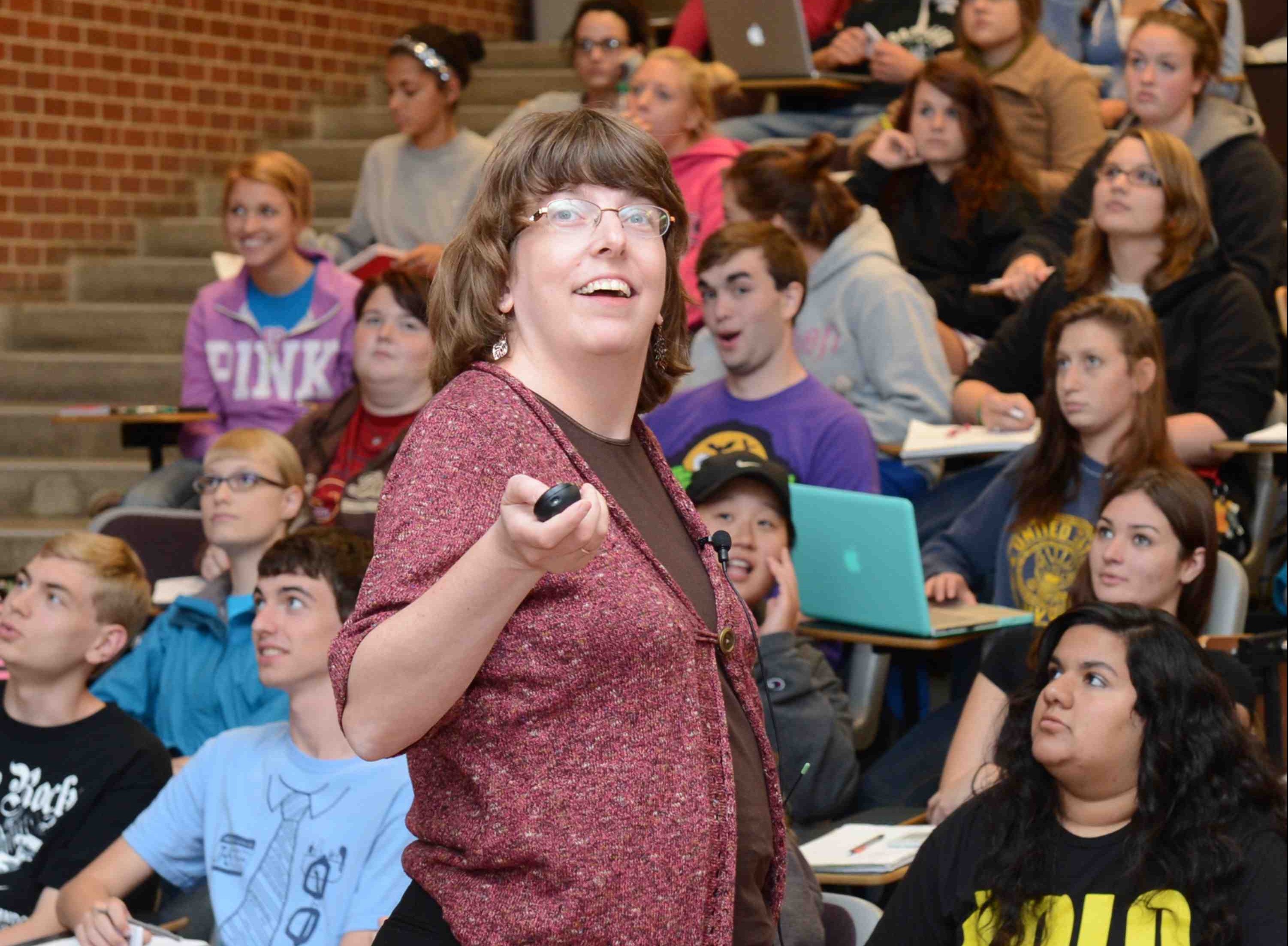
Bringing Science To Life In The Classroom
Microbes rule the world. That’s a fact that Nancy Boury shares with students in her Microbial World class.
“There are more microbes in one person’s gut than there are people who have ever lived on earth,” says Boury, a senior lecturer in animal science (’97 PhD molecular, cellular and developmental biology).
To make introductory micro- biology, biology and genetics interesting, Boury incorporates real-life scenarios into her classes. In one class she asked students to bring evidence both for and against the idea that microbes can influence weight gain. She also asked students to analyze the source of the research they used as evidence.
“I want students to think and not just memorize,” Boury says. “Information literacy is important because students need to understand the source of information they use to make decisions.”
Making students comfortable in the classroom is a priority for Boury. She does that by trying to memorize everyone’s first name, which isn’t an easy task when you have more than 250 students. She also asks them to submit a question on the first day of class. Every fall she spends two weeks responding to each question.
“It would be easier to teach these classes if I didn’t care, but I care,” Boury says. “I went to a small, private, liberal arts school and I try to take the advantages of that setting and bring them to the class.”
If you sit in on one of her classes it’s obvious the students enjoy her and are involved in the learning process. Her goal is to encourage students to reach their full potential, provide an active learning experience and bring science to life.
Boury advises first and second year microbiology students and is the Microbiology Learning Community coordinator. One former student and advisee, Janae Hohbein (’09 microbi- ology) who is attending the Des Moines University College of Osteopathic Medicine, says she still uses the study techniques she learned from Boury.
“I can honestly say that without her mentoring, I would not be flourishing in medical school,” Hohbein says. “Many professors can boast about the grades their students get and the things their students achieve, but only a few can boast about who their students become as people.”
Ed Braun, professor of plant pathology and microbiology, team-teaches the microbiology class with Boury. Braun focuses on the plant aspect and Boury’s focus is more on the animal and human health areas. He says Boury has a great rapport with students.
“It’s fantastic to watch the level of inter- action she has with the class,” Braun says. “She’s serious, but leavens it with humor.”
That humor is important to Boury. She asks students to bring in cartoons or other microbial humor she can share with her classes and says student compete to be featured.



